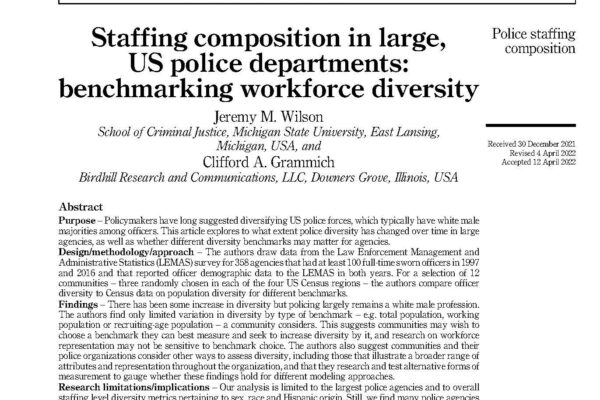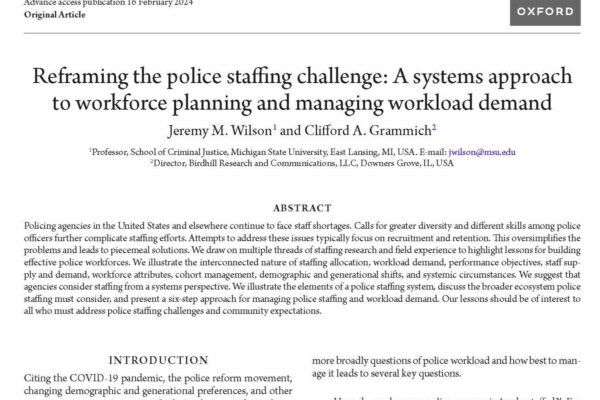Police agencies face myriad staffing challenges. Among these are changing preferences for police work, training officers for increasingly complex environments, diversifying police workforces to reflect the communities they serve, and ensuring officer wellness. Perhaps the most pressing of these, as reported by agencies themselves, is the need to maintain force levels by balancing recruitment and retention. Citing decreasing numbers of applicants and increasing numbers of retirements or other departures from the field, many police agencies report being understaffed. This, in turn, raises the questions of how we know an agency is understaffed and what, ideally, its staffing levels should be. Answering these questions can be more complex than it appears. Understandably, agencies, community leaders, and other stakeholders seek indicators and rules-of-thumb to serve as benchmarks for their target staffing level. Benchmarks such as staffing ratios, peer-agency comparisons, and allocation levels are frequently used because of their ease in identification, historical and widespread use, and intuitive nature that makes them understandable and easily explained. Yet their use can lead to myths about their appropriateness that hinder agencies as they seek to provide police services as efficiently as they can. In this article, we discuss these common benchmarks, perils of their use, and an alternative way forward.
Debunking Myths of Police Staffing Benchmarks. Michigan Police Chiefs Magazine, Summer, 2024.
Featured Research

A Performance-Based Approach to Police Staffing and Allocation
U.S. Department of Justice, Office of Community Oriented Policing Services

Brand Protection and the Global Risk of Product Counterfeits: A Total Business Solution Approach
Edward Elgar Publishing
***WINNER OF THE AMERICAN SOCIETY OF CRIMINOLOGY DIVISION ON WHITE-COLLAR AND CORPORATE CRIME OUTSTANDING BOOK AWARD***

Staffing Composition in Large, US Police Departments: Benchmarking Workforce Diversity
Policing: An International Journal

Reframing the Police Staffing Challenge: A Systems Approach to Workforce Planning and Managing Workload Demand
Policing: A Journal of Police and Practice

Police Recruitment and Selection: Resources And Lessons for Workforce Building
U.S. Department of Justice, Office of Community Oriented Policing Services

